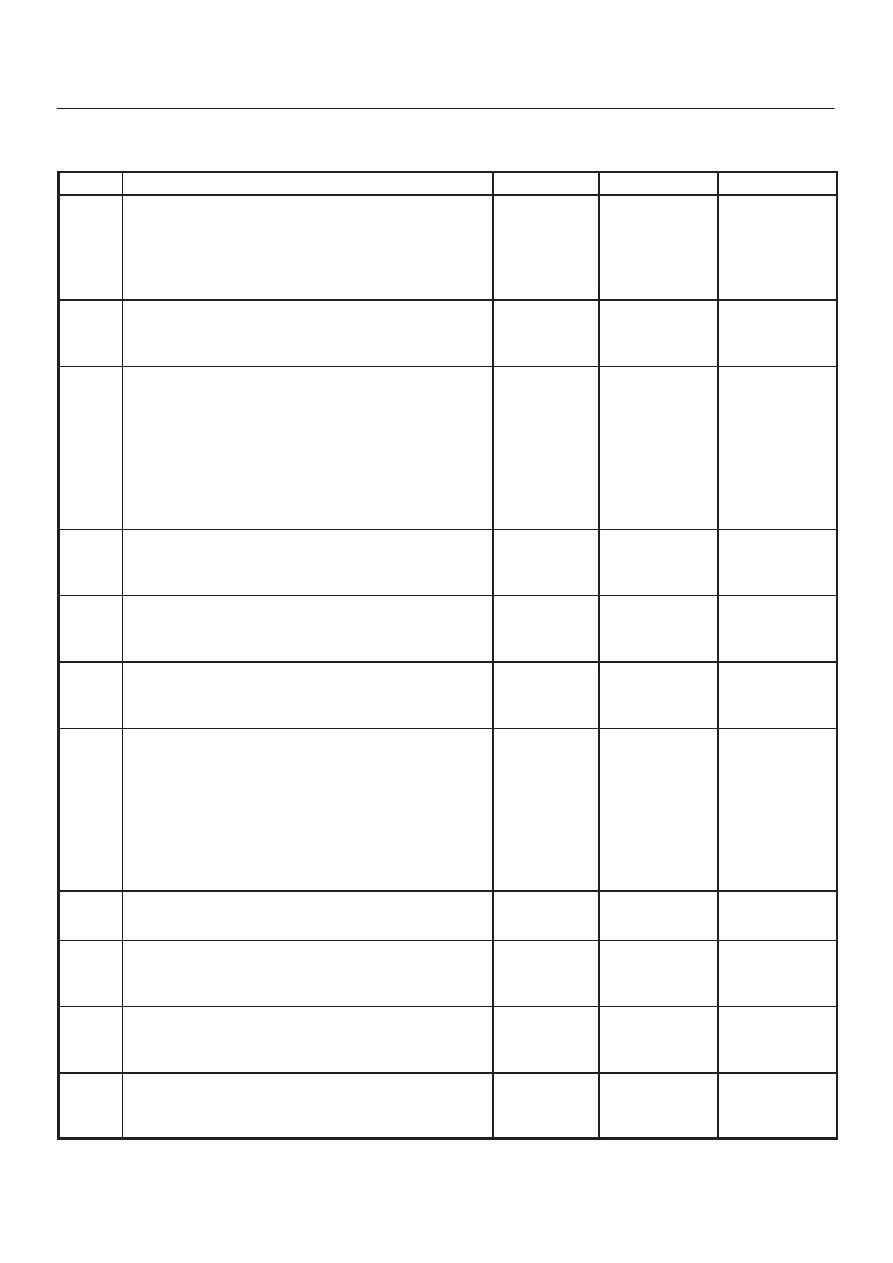Opel Frontera UBS. Manual - part 288

6E–58
ENGINE DRIVEABILITY AND EMISSIONS
A/C Clutch Control Circuit Diagnosis
(Cont'd)
Step
No
Yes
Value(s)
Action
34
1. Remove the A/C compressor relay.
2. Ignition “ON.”
3. Use a DVM to check voltage at both of the BRN
wires at the A/C compressor relay socket.
Is the voltage equal to the specified value?
+B
Go to
Step 36
Go to
Step 35
35
Repair the faulty BRN wire between the A/C fuse and
the A/C compressor relay .
Is the action complete?
—
Verify repair
—
36
1. A/C compressor relay removed.
2. Engine idling.
3. A/C “ON.”
4. Blower “ON.”
5. Use a DVM to measure voltage between the
GRN/BLK wire at the A/C compressor relay socket
and battery
±
.
Did the DVM indicate the specified value?
+B
Go to
Step 40
Go to
Step 37
37
Check for an open GRN/BLK wire between PCM
terminal B-14 and the A/C compressor relay.
Was the wire open?
—
Go to
Step 38
Go to
Step 39
38
Repair the open GRN/BLK wire between the PCM and
the A/C compressor relay.
Is the action complete?
—
Verify repair
—
39
Check for a damaged pin or terminal at B-14 of the
PCM.
Was a damaged pin or a terminal found?
—
Go to
Step 32
Go to
Step 33
40
1. A/C compressor relay removed.
2. Connect a fused jumper at the A/C compressor
relay socket between either BRN wire and the
BRN/YEL wire.
3. Engine idling.
4. A/C “ON.”
5. Blower “ON.”
Did the compressor magnetic clutch engage?
—
Go to
Step 41
Go to
Step 42
41
Repair the A/C compressor relay.
Is the action complete?
—
Verify repair
—
42
Check for an open circuit between the A/C compressor
relay and the A/C clutch.
Was an open circuit found?
—
Go to
Step 43
Go to
Step 44
43
Repair the open circuit between the compressor Clutch
and the A/C compressor relay.
Is the action complete?
—
Verify repair
—
44
Service the compressor clutch or replace the
compressor due to a faulty internal overheat switch.
Is the action complete?
—
Verify repair
—